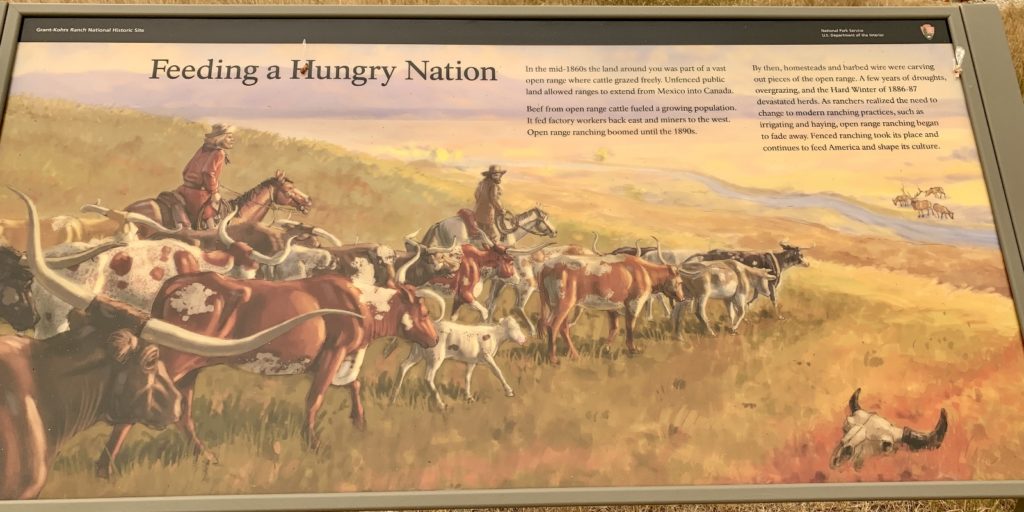
During our recent trip to SW Montana’s Pioneer Mountains, the 2020 wildfire season was creating some of the worst air quality ever recorded in the Western U.S.. While conditions were better in Western Montana than they were back home in Washington, they were not healthy for hiking. We cancelled several hikes we had planned and shifted our focus to the wealth of historical sites in the area. We spent one day exploring the small, but charming community of Deer Lodge, Montana. Sadly, my photos from the day all look dull and dirty due to the extremely poor air quality, but it was still an interesting and educational day spent wandering a charming community.
The Deer Lodge Valley was settled by ranchers in the early 1860s. Conditions were prime for raising cattle which was marketed to mining towns throughout the region and travelers along the Oregon Trail. Today, the small town of Deer Lodge caters to history buffs. According to visitmt.com, this picturesque town surrounded by towering mountain ranges has more museums and historical collections than any other town in the Northwest. This seems a lofty claim, but we could have easily spent a few days exploring everything that Deer Lodge has to offer.
Old Montana Prison Complex
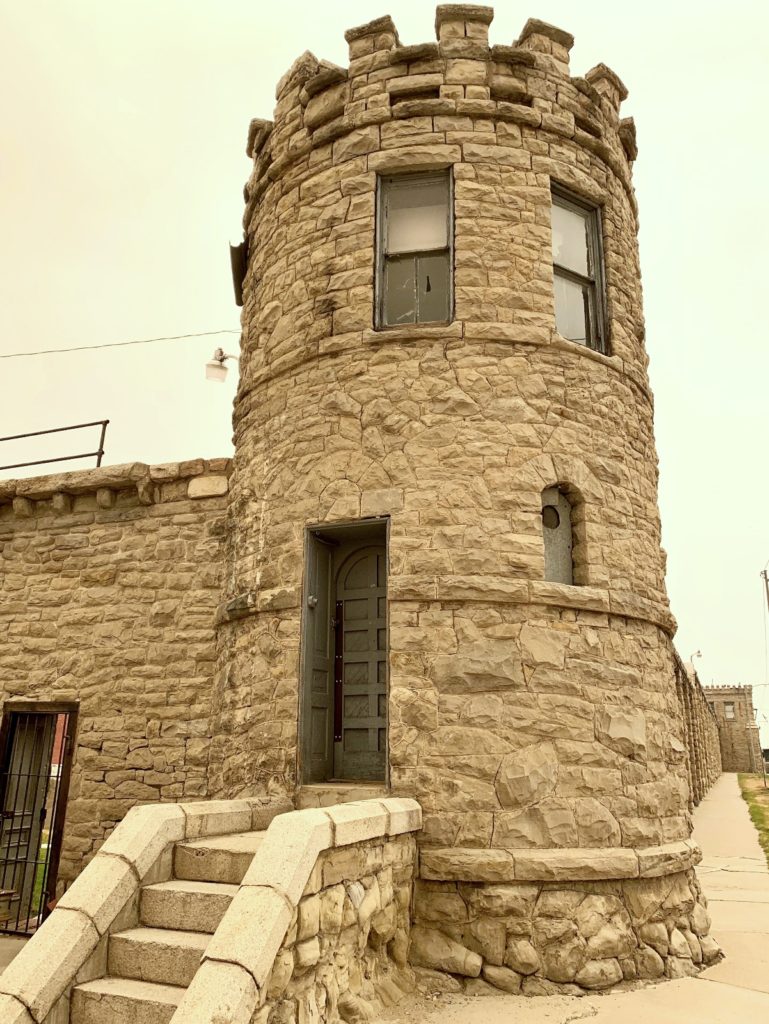
The Old Montana Prison Complex houses five unique museums inside its historic prison walls: the Old Montana Prison, Powell County Museum, Frontier Montana Museum, Yesterday’s Playthings and the Montana Auto Museum. The $15 entry fee covers all five museums. The Old Montana Prison was the first territorial prison in the western United States. The prison was built by convict labor in the late 1800s. The gray sandstone walls of this immense structure are 24 feet high and buried 4 feet deep to prevent escape by tunneling. We spent some time walking around the prison, but didn’t go to any of the museums. You’d really need a couple days to explore the complex.

We did take some time to check out the Milwaukee Railroad Exhibit and Cottonwood City Pioneer Town which are both free, outdoor exhibits near the prison. Cottonwood City Pioneer Town is a cute city park designed after an 1858 frontier town. Visitors can wander the wooden sidewalks and visit the church, blacksmith, post office, jail (complete with gallows), and cemetery.
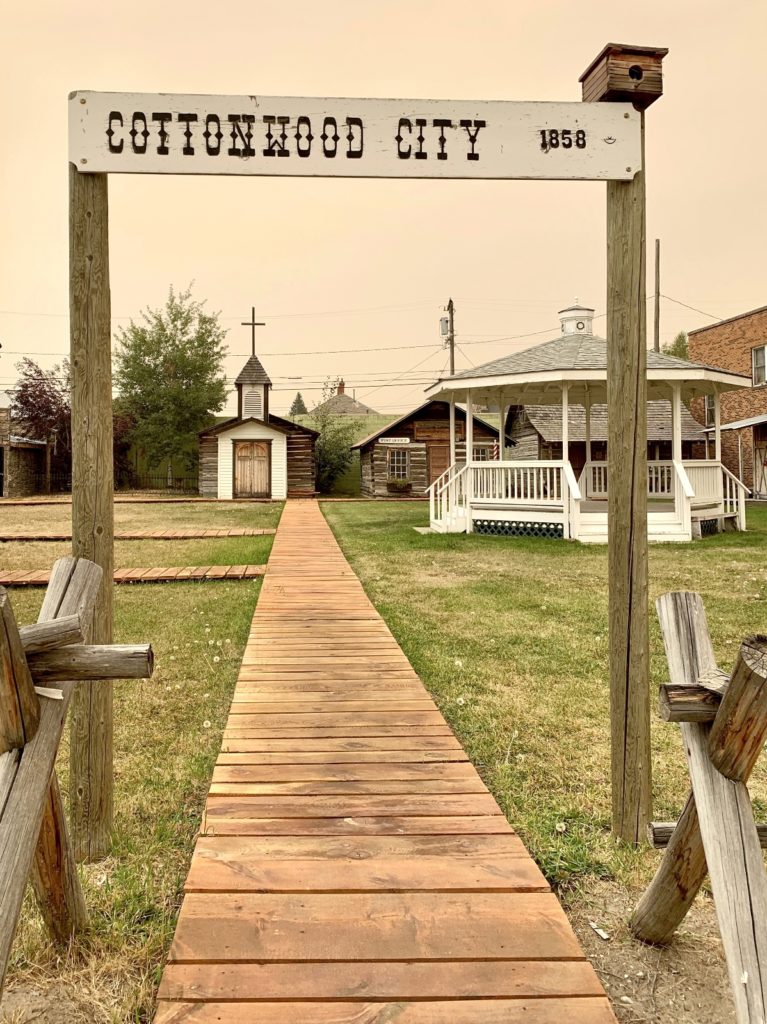
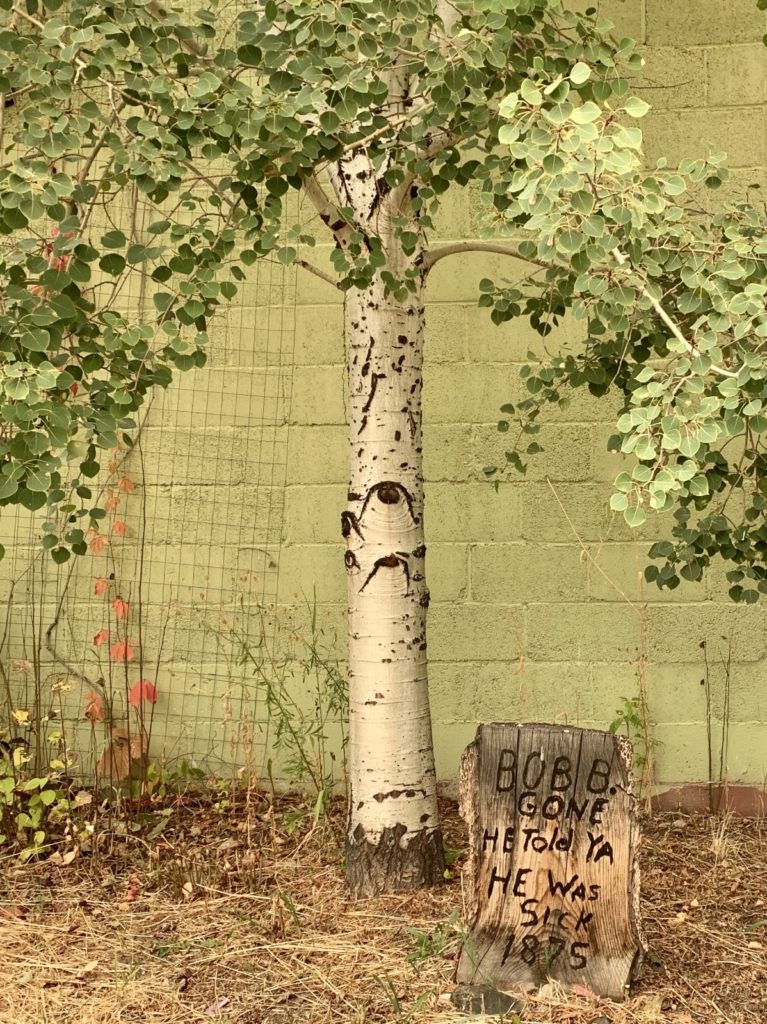
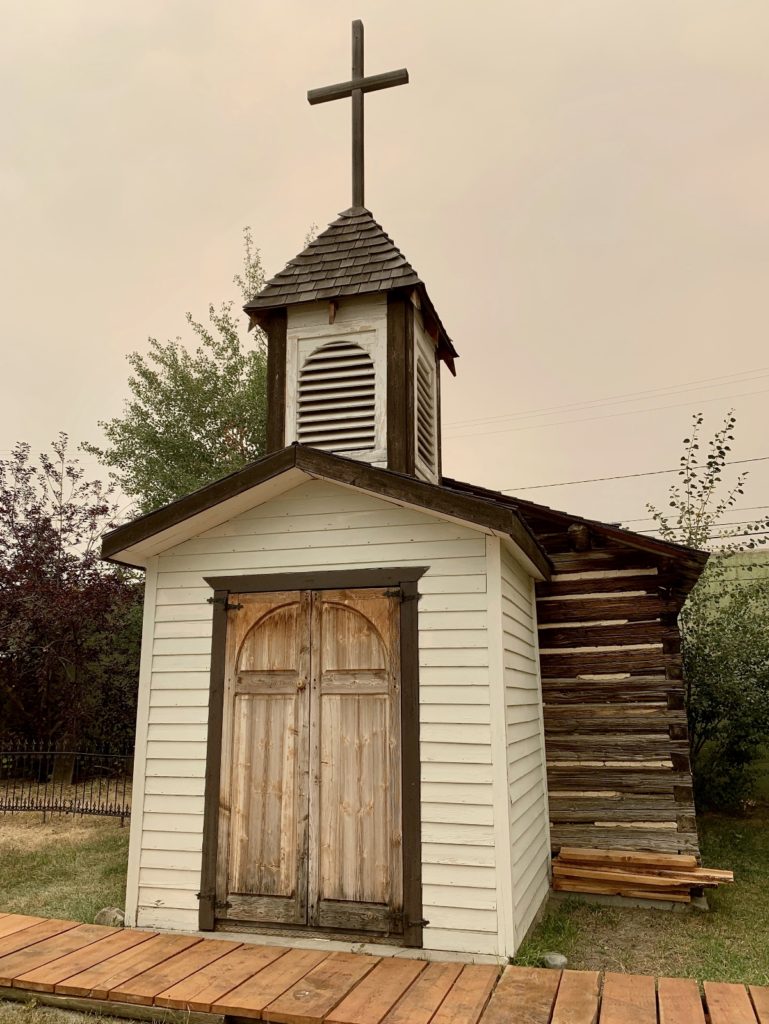
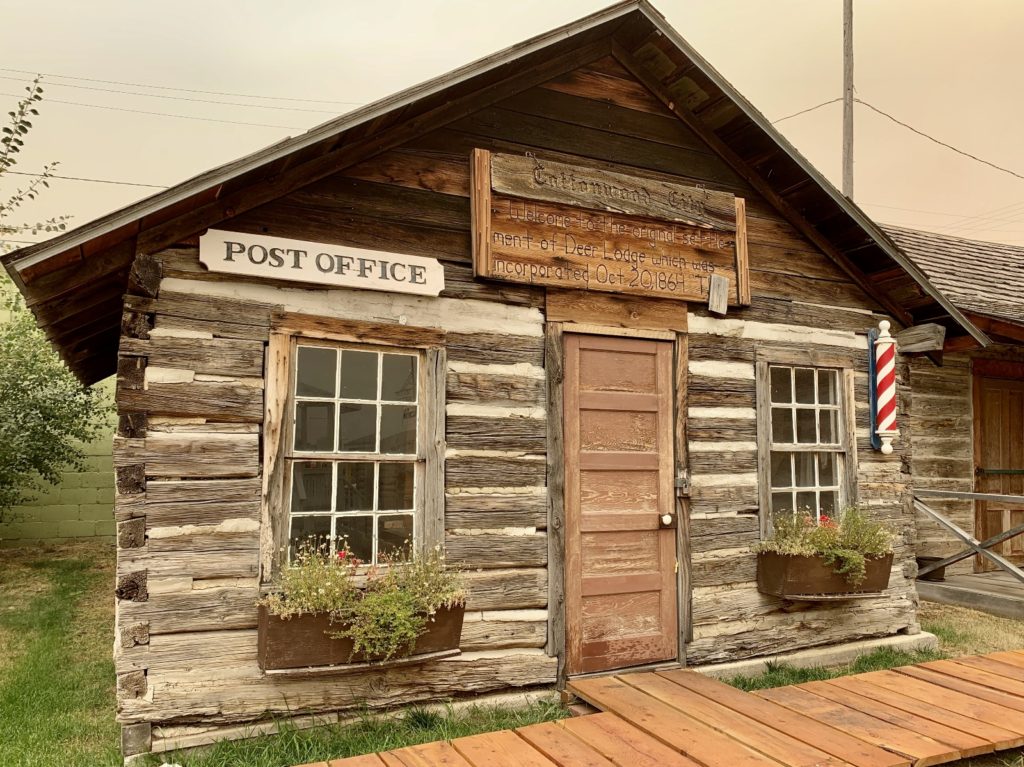
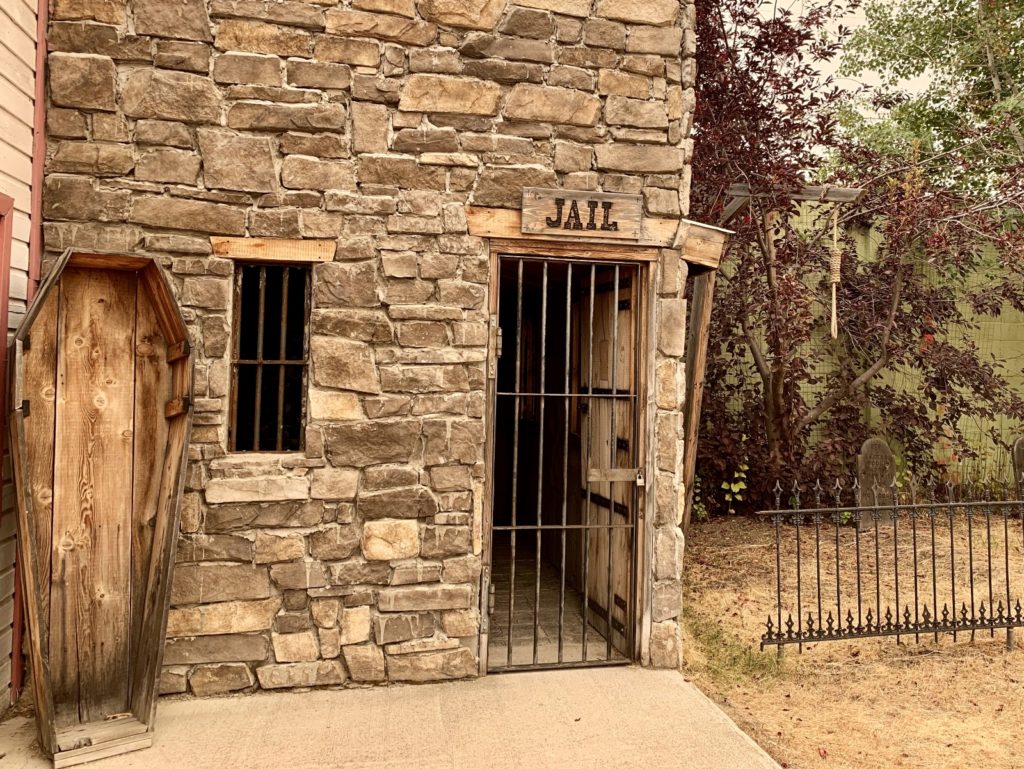
The Milwaukee Railroad Exhibit pays tribute to the last spike of the Chicago, Milwaukee, St. Paul, and Pacific Railroad which was driven near Gold Creek about 17 miles west of Deer Lodge on May 19, 1909. A monument was erected near the site to celebrate the event and it was moved to Deer Lodge in 2003. In 1883, the Northern Pacific celebrated the driving of its last spike near here on the Clark Fork River after 13 long years of construction. The Northern Pacific was most notable for being the first of the northern transcontinental railroads. One cannot overstate the importance of the railroads to the taming of America’s West. They brought settlements to the territories through which they passed. Within seven years of the Northern Pacific’s completion, Washington, Idaho, Montana, and North Dakota all become states.
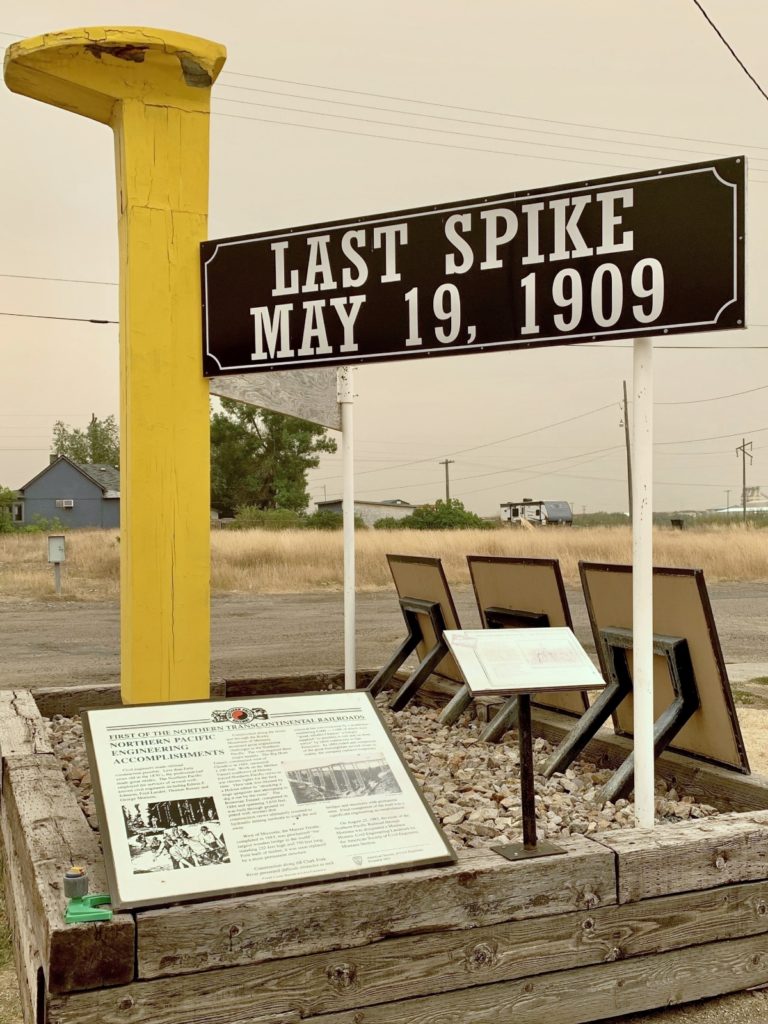
Grant-Kohrs Ranch National Historic Site
Our primary reason for visiting Deer Lodge, Montana was to visit Grant-Kohrs Ranch National Historic Site, one of 422 units administered by the National Park Service. This unit was created in 1972 to commemorate the Western cattle industry from its beginnings in the 1850s through recent times. In 1862, Canadian fur trader John Grant established the ranch at the future site of Deer Lodge, along the banks of the Clark Fork River. Cattle baron Conrad Kohrs later purchased and expanded the ranch. Today, visitors can take a self-guided tour of 88 historic buildings, enjoy a ranger led tour of the beautiful ranch house (declared the “finest in Montana” by The Montana Post in 1862), see the ranch from a wagon tour, participate in living history demonstrations, and walk nearly ten miles of ranch roads and trails that crisscross the 1,618 acre working ranch.
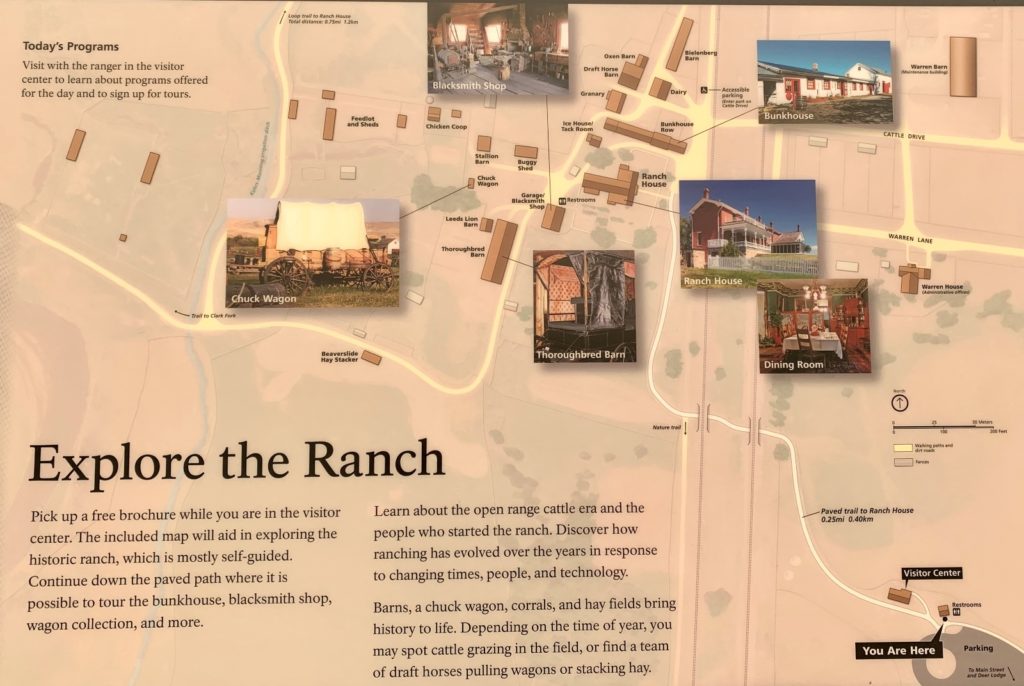
A historical summary from the park’s website: Dreams of wealth lured the first cattle men to Montana. The range was open and unfenced, and they could fatten their cattle on the lush bunchgrass and push on to new pastures when the old areas were overgrazed. The main obstacles were buffalo and the Indians, and by the 1860’s both were fast being overcome. Many of the herds were built through trade with westward-bound emigrants, who gladly swapped two or more trail-worn cows for a single well-fed one. In the late 1870’s cowboys drove herds of rangy longhorns up from Texas to the better grazing lands of Montana, adding a Spanish strain to the English shorthorn breeds already established there and greatly multiplying the herds.

By 1885, cattle raising was the biggest industry on the High Plains, and foreign investors and eastern speculators rushed to get in on the bonanza. As ranches multiplied and the northern herds grew, there came a predictable consequence: overgrazing. This and the fierce winter of 1886-87 caused enormous losses, estimated at one-third to one-half of all the cattle on the northern plains. Many cattlemen never recovered. If the snows of ’86-87 foreshadowed the end of open range ranching, the homesteaders, with their barbed wire and fenced-in 160 acre claims, finished it off.

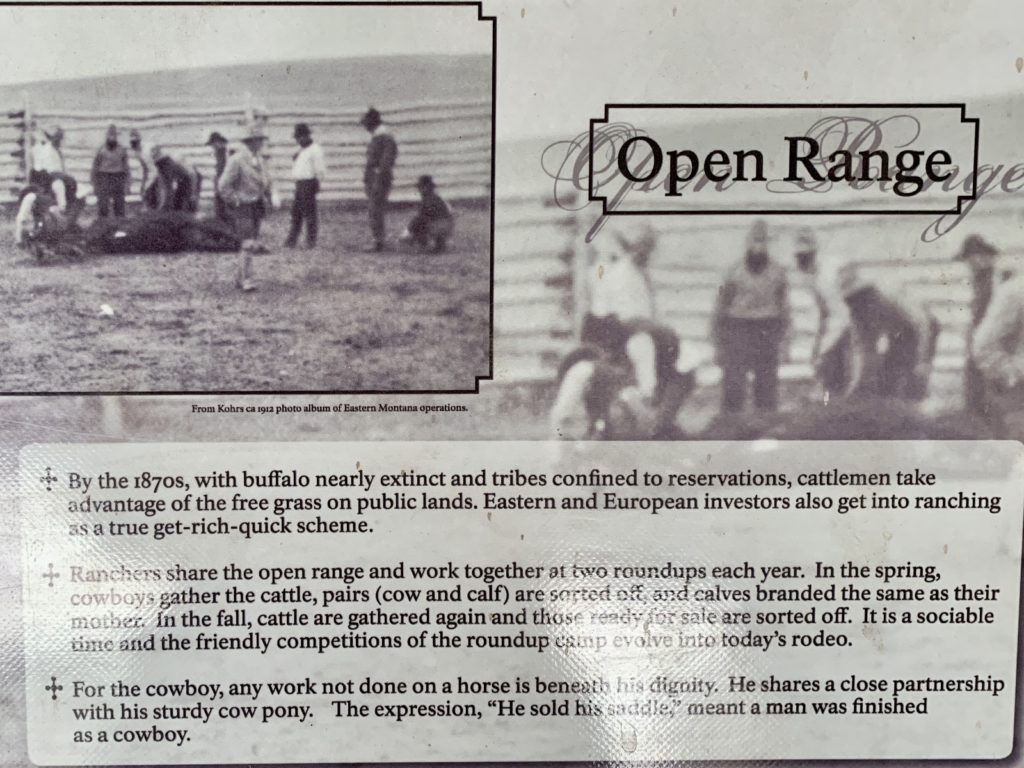
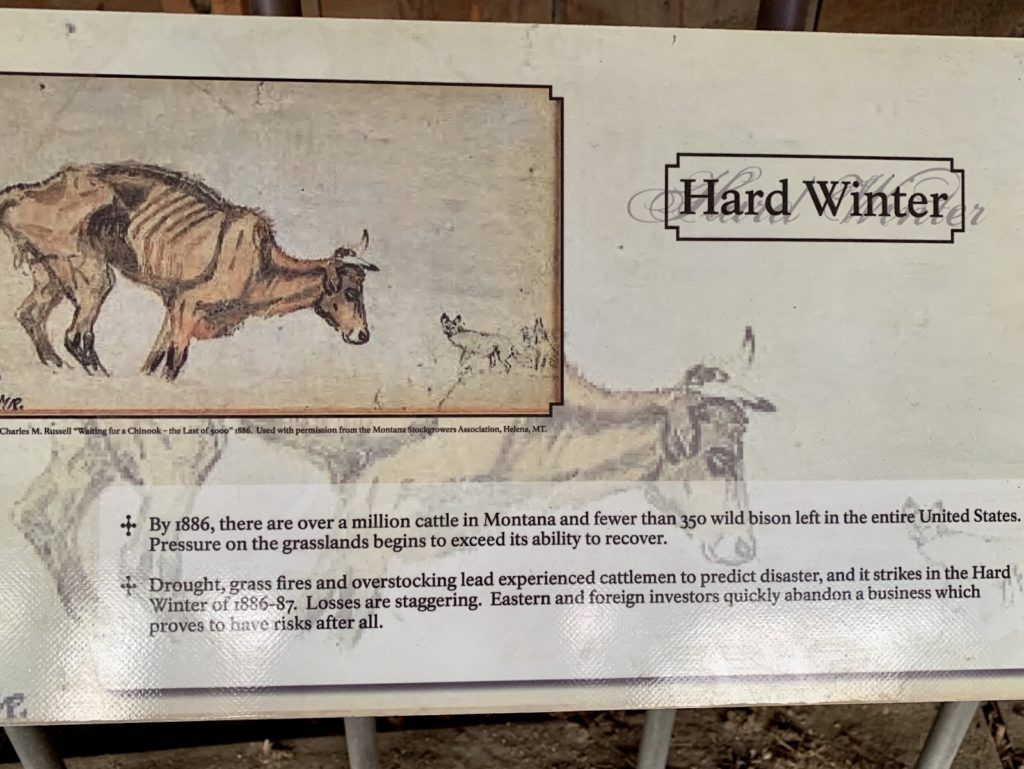
The open-range cattle industry lasted only three decades. Few of its pioneering men and women made their fortunes or are remembered today. But from their beginnings has evolved the more scientific ranching of today, with its own risks and uncertainties. That is the legacy of the Grants and the Kohrs, whose pioneer ranch, complete with original furnishings, is a reminder of an important chapter in the history of the West.
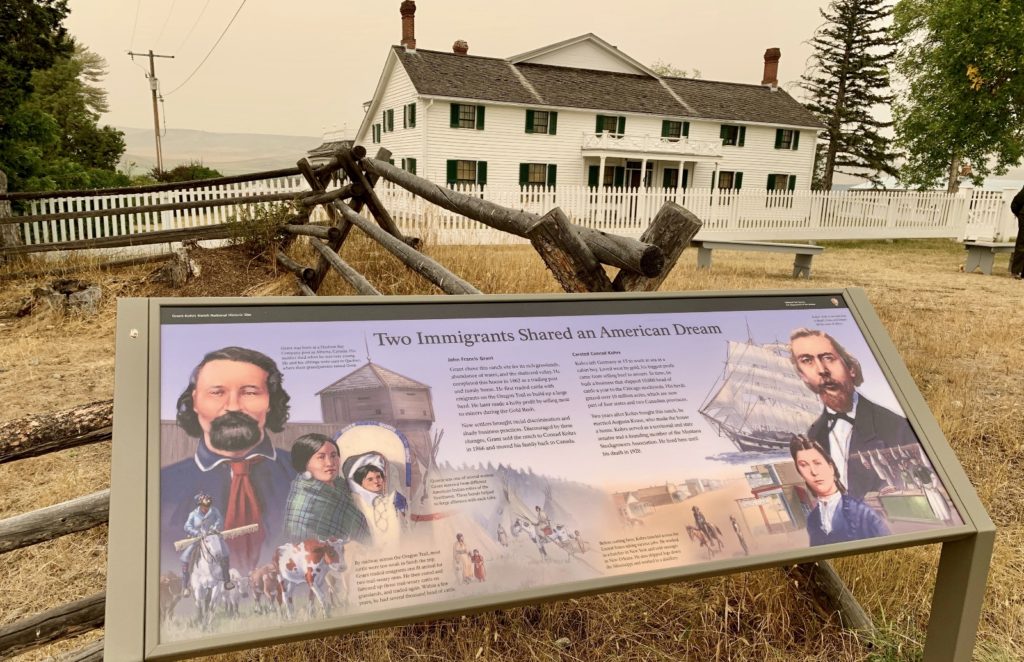
During our visit in September 2020, the ranch house tours and ranger programs were suspended due to the COVID-19 pandemic. Still, there was much to do and see. All of the historic buildings were open on the self-guided tour and all park trails were open. Visitation on that very smoky September day was light making social distancing very easy. To be honest, despite being an avid National Park and history buff, I had only recently learned of Grant-Kohrs Ranch N.H.S. I wasn’t quite sure what to expect and went more for the goal of checking another National Park Unit off my list (my goal is to visit them all). I was super impressed with all there was to see. The National Park Service has done an exceptional job of telling the story of the cowboy, settling of the West, and cattle industry. I wish we could have visited on a clear day to enjoy views of the stunning Pintler Mountain Range towering to the west, but this was a great way to spend a very smoky day.
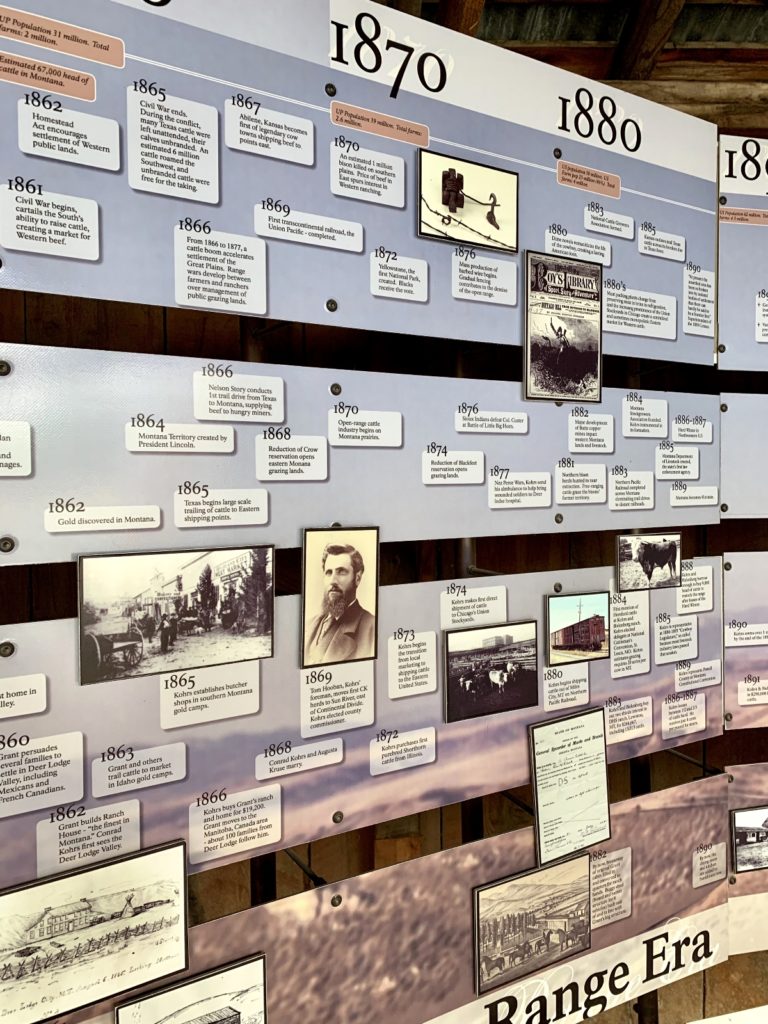
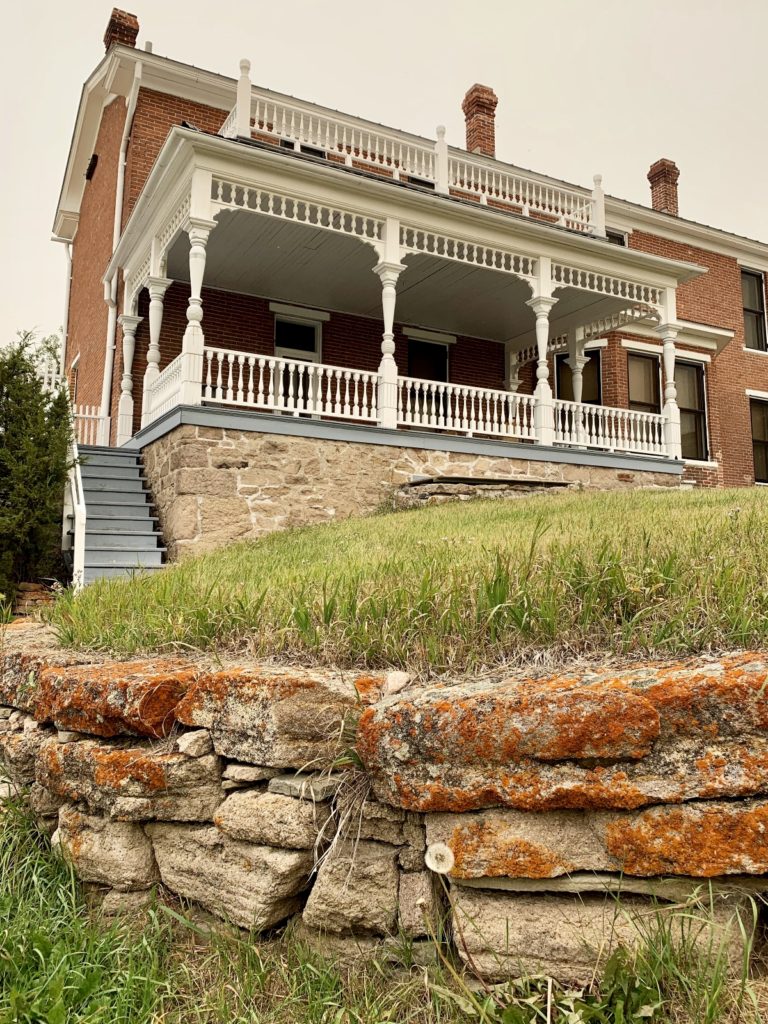
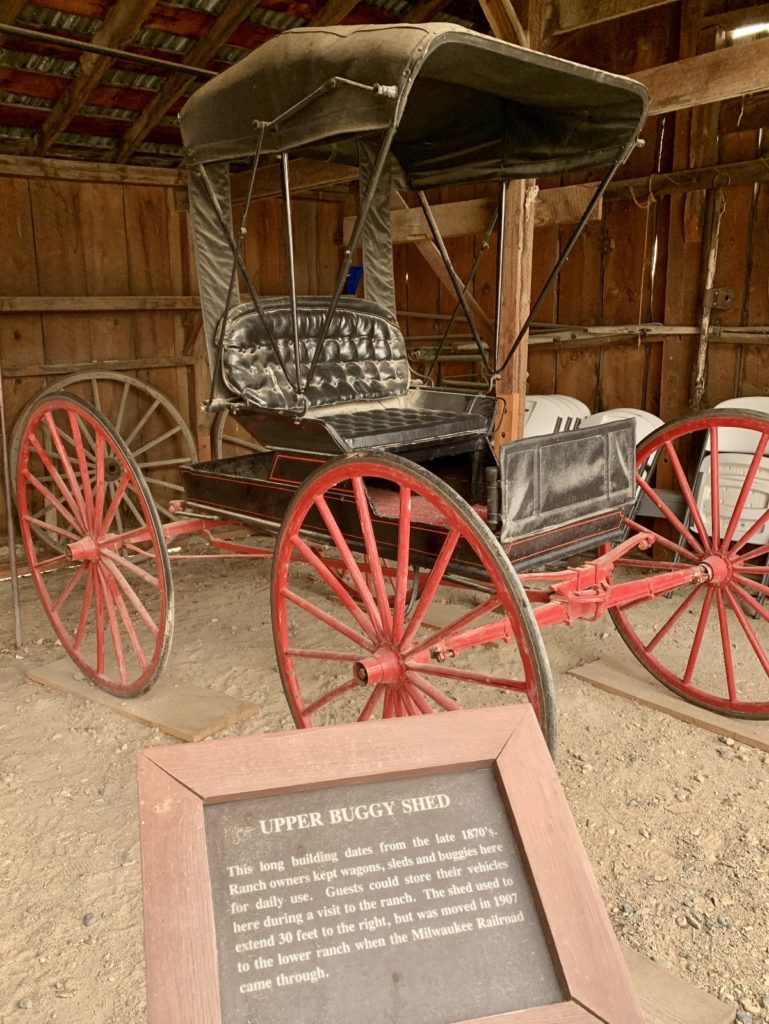
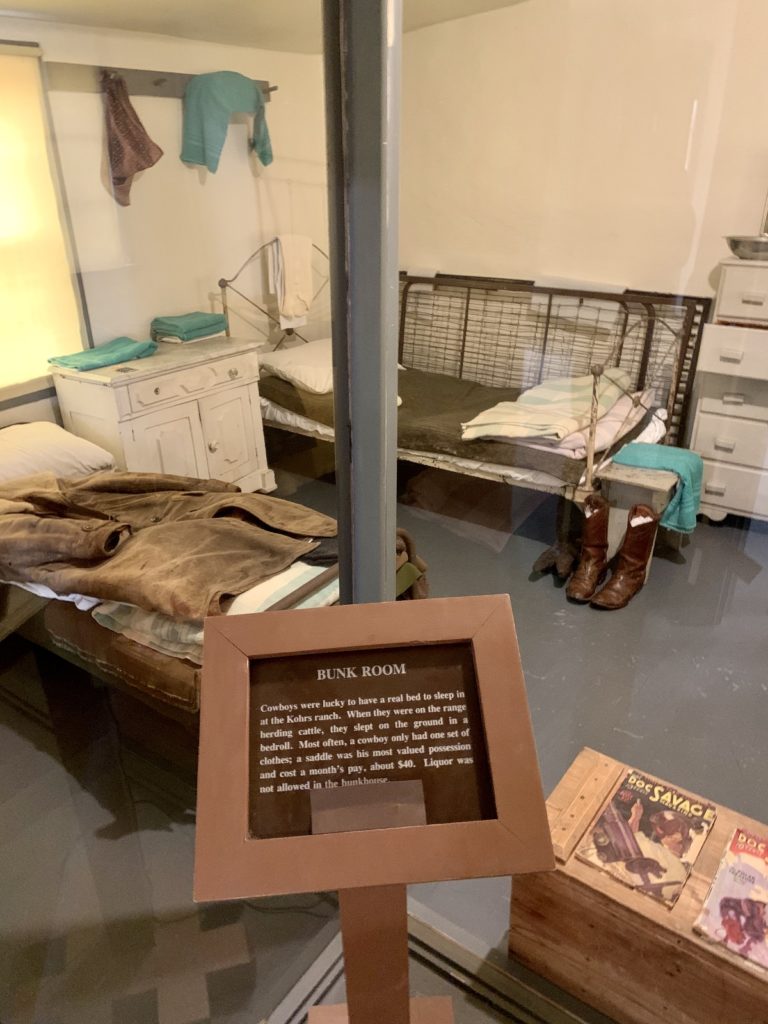
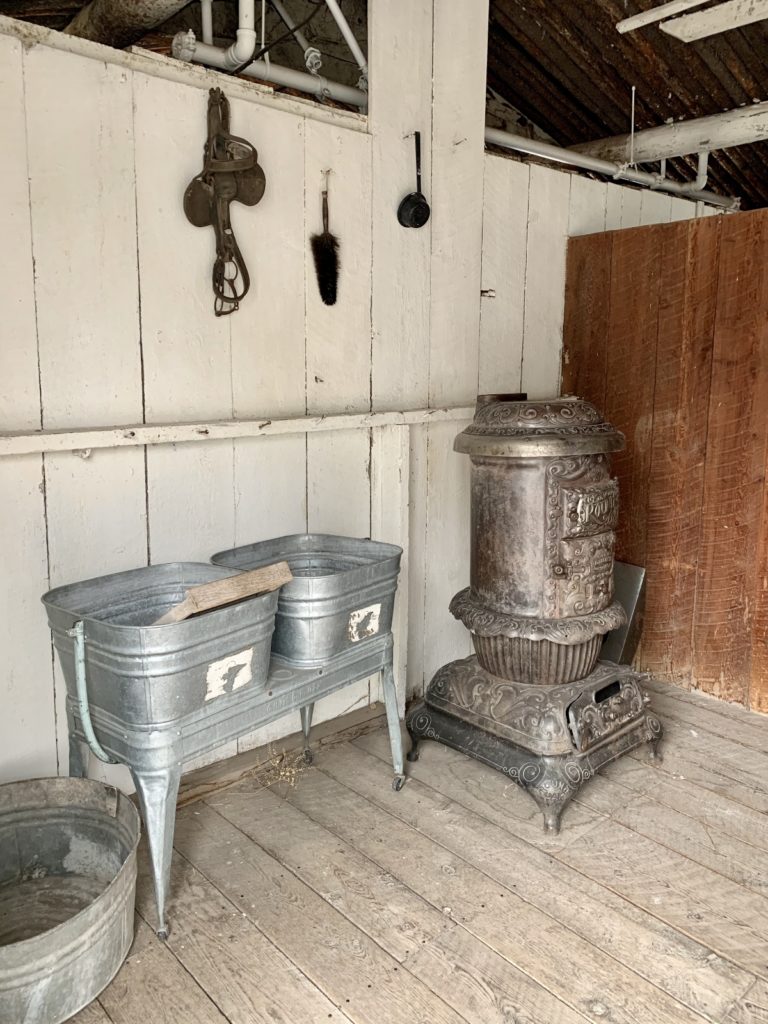

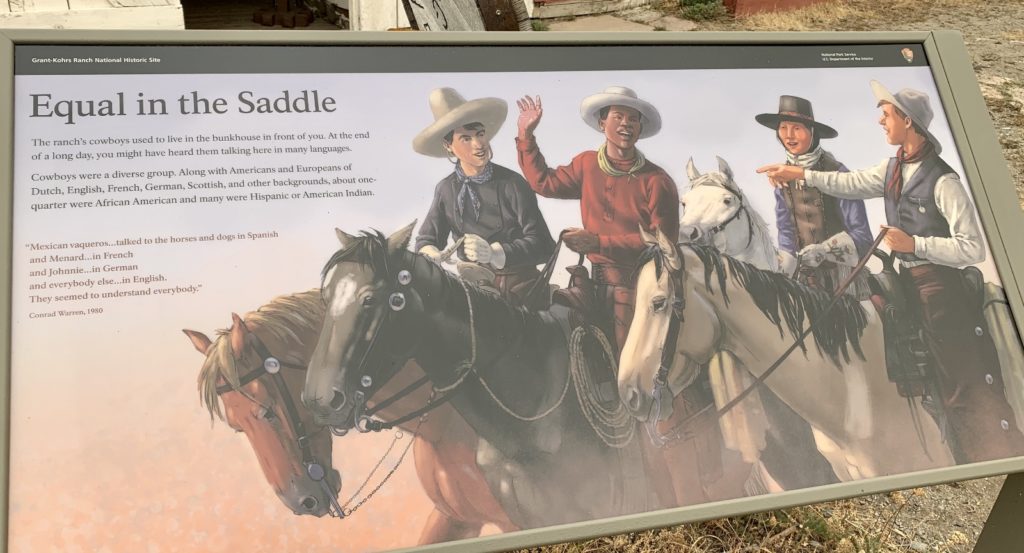
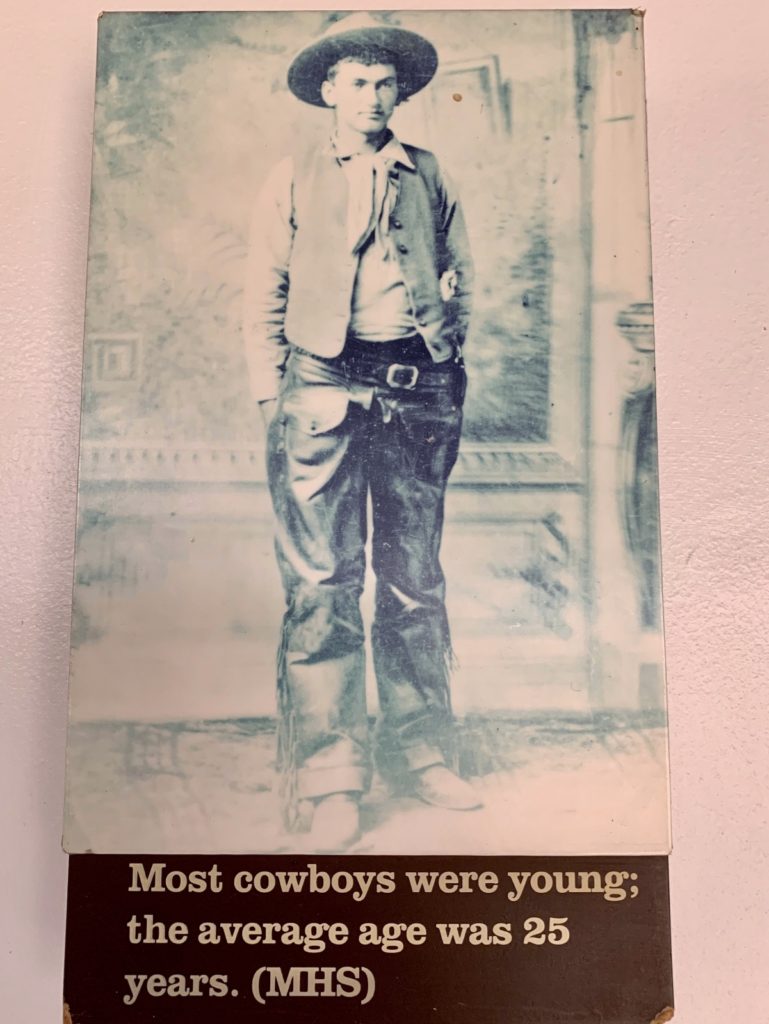
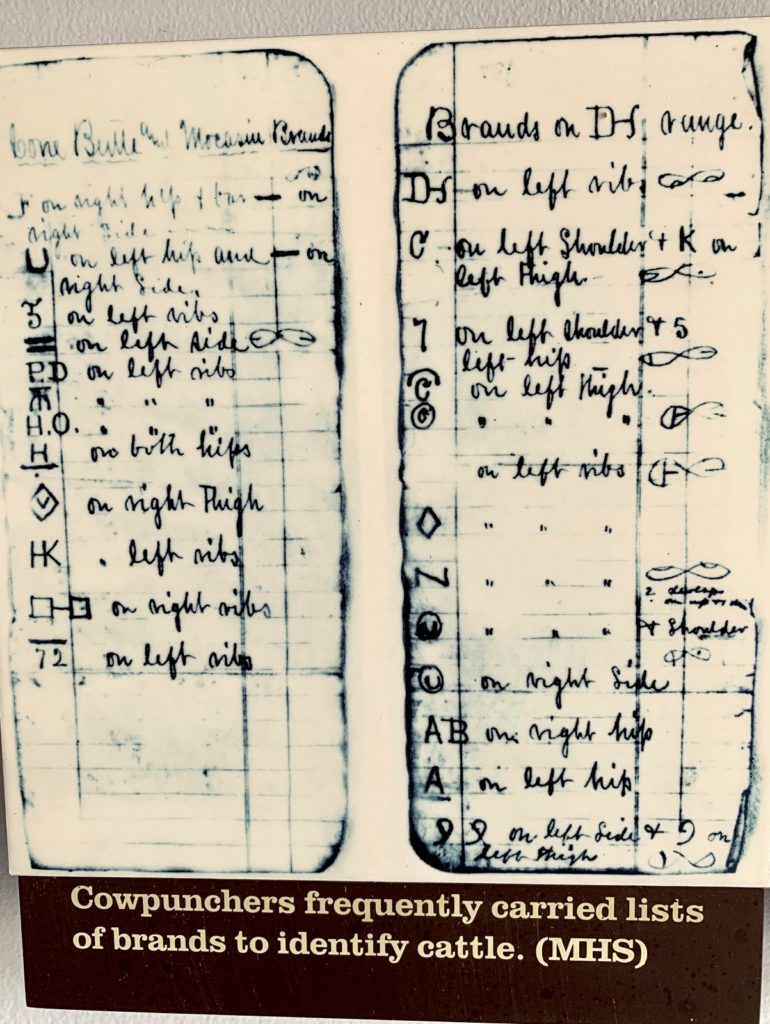
The park is open daily except Thanksgiving, Christmas Day, and New Year’s Day. While the park is open on other major holidays, hours may be reduced. This is a fee-free site—yes, you heard me right! It is absolutely free to visit this well-preserved historical site! Be sure to stop at the log cabin visitor center at the west end of the parking lot. They can provide you with program information, park pamphlets, and area information. While at the visitor center, check out their bookstore and don’t forget to get your park passport stamp! Directions to the park: take Interstate 90, exit 187. Drive through town, approximately 2.5 miles. Turn left onto Grant Circle and enter the park.
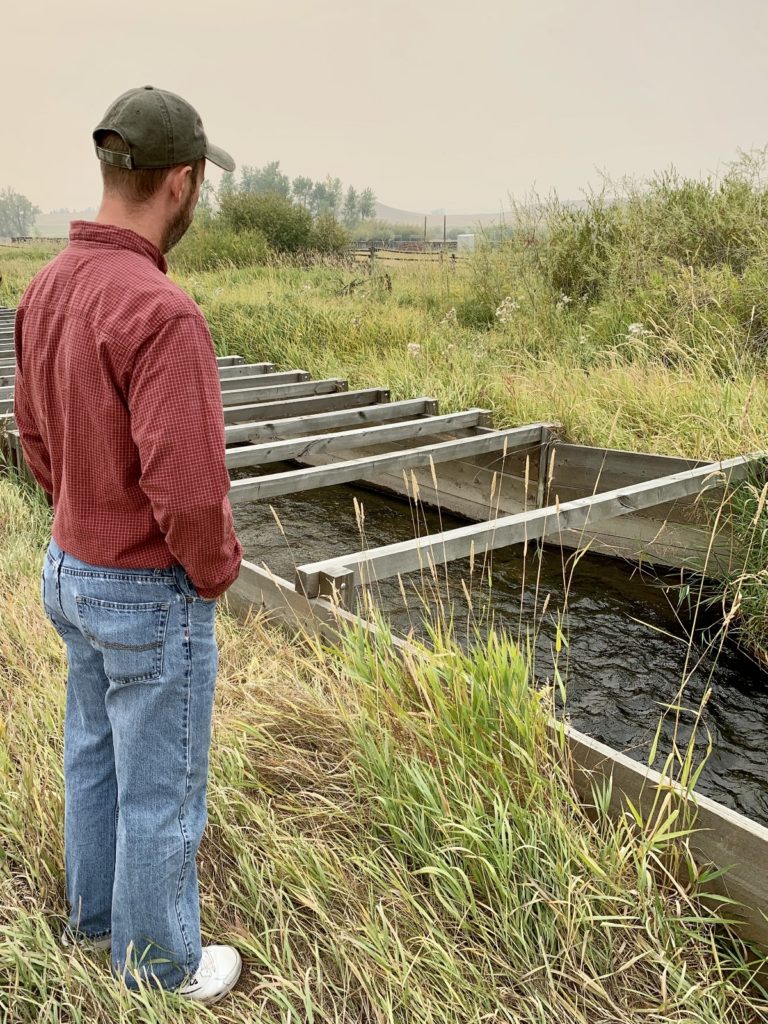
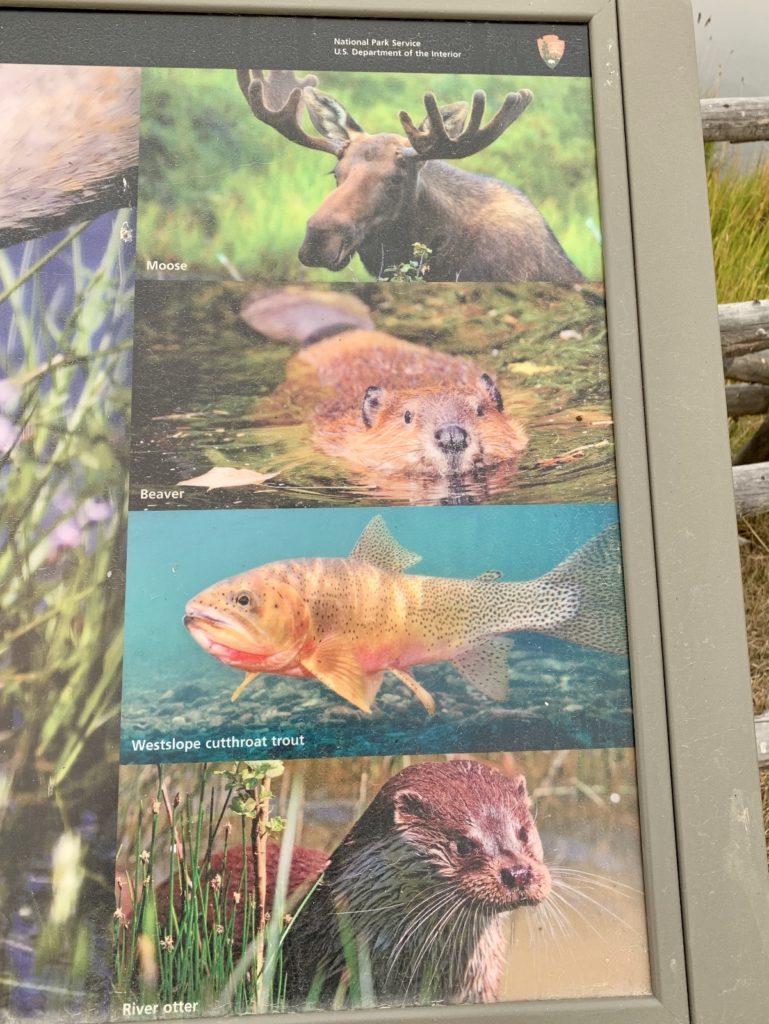
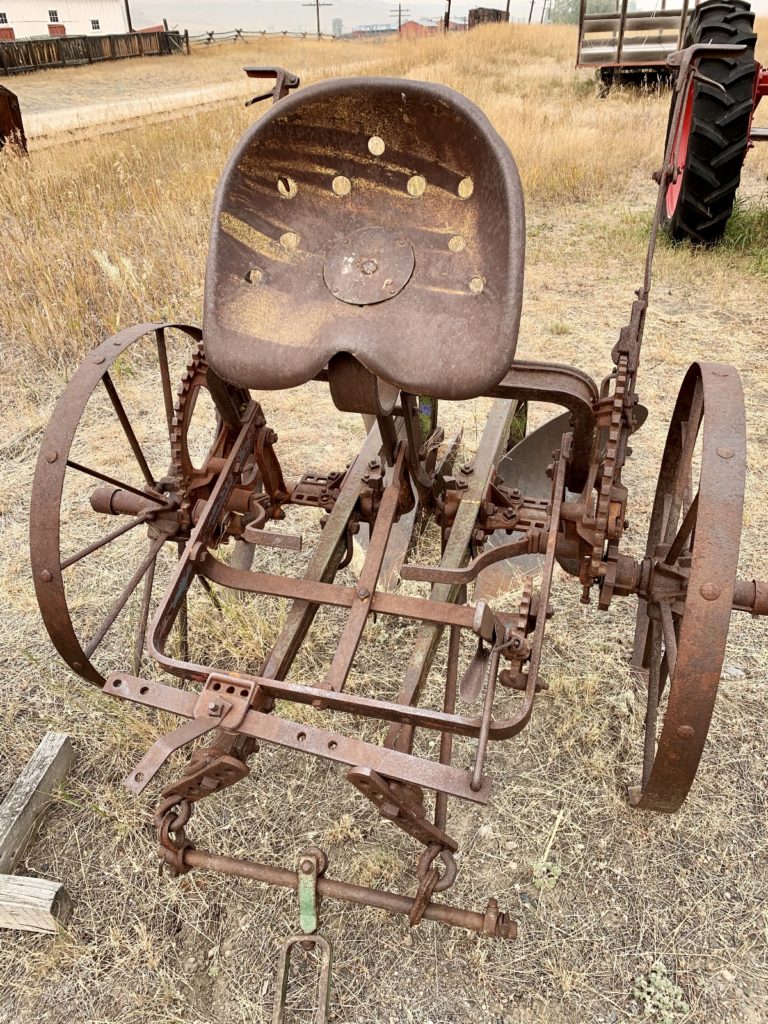
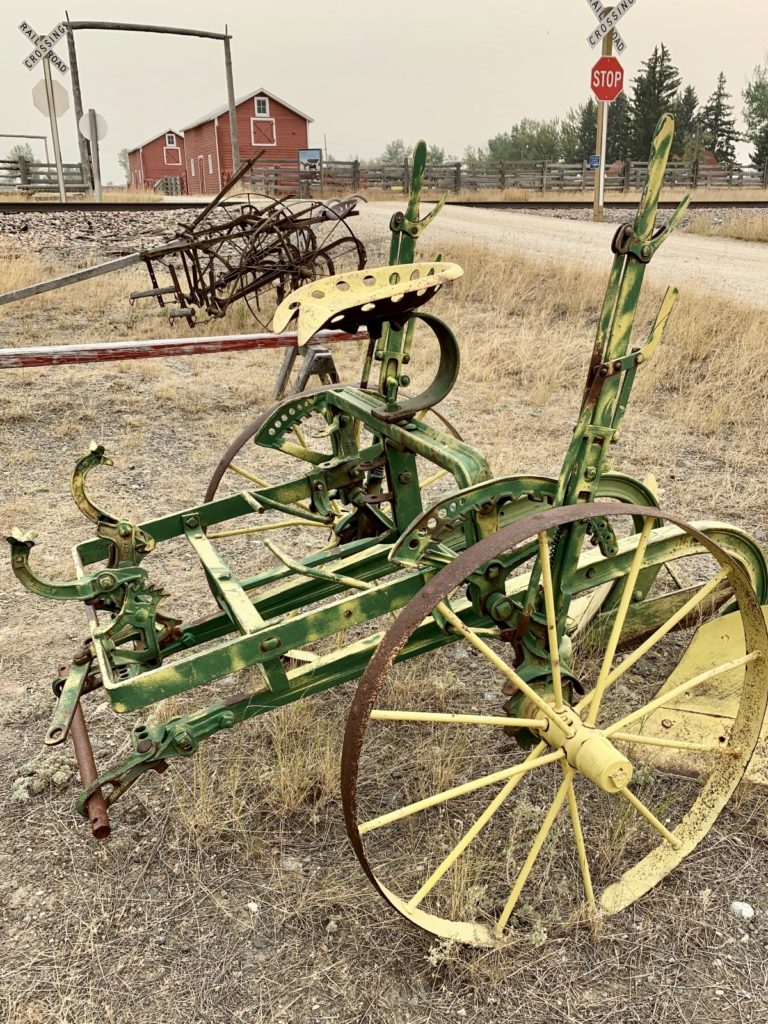
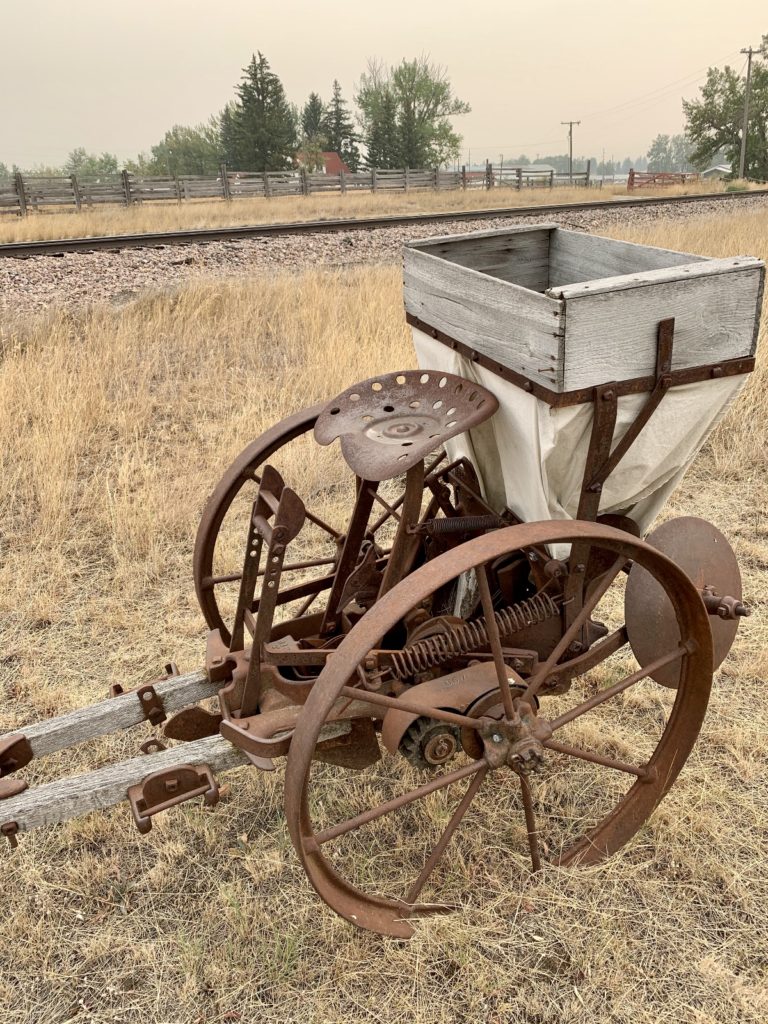
Related Posts
- Montana’s Pioneer Mountains National Scenic Byway Part 1: Camping & Hiking
- Montana’s Pioneer Mountains National Scenic Byway Part 2: Historical Sites
- Big Hole National Battlefield, Wisdom, Montana
The Adventure Continues
Our next post will feature another National Park Unit that is within an hours drive of the Pioneer Mountains National Scenic Byway, Big Hole National Battlefield. And don’t forget to check out our Amazon RV and Adventure Gear recommendations accessed via links at the top of our home page. We only post products that we use and that meet the Evans Outdoor Adventures seal of approval. By accessing Amazon through our links and making any purchase, you get Amazon’s every day low pricing and they share a little with us. This helps us maintain Evans Outdoor Adventures and is much appreciated!
Even though I have briefly stopped in Deer Lodge before, I am guilty of bypassing this gem of western history as I focused solely on “making good time” on the interstate. It’s now time for me to stop and smell the cow patties when I’m in this area. I did find the time, though some 34 years ago, to visit the Montana Auto Museum which was free admission at that time. There was talk of moving the entire auto collection (to Nevada?). Glad to see that never happened. I think Jason would have liked all the muscle cars, if you guys didn’t visit this museum. Keep up the good work on bringing us SW Montana history (which ironically is not far from where I grew up)!
You are right, friend. Jason would love seeing the muscle cars at the museum! If you were to give him a million dollars today and tell him to do one frivolous thing for himself, I’m pretty sure it would be a muscle car (orange, of course). I’m sure we’ll end up back in Deer Lodge someday. We can hit that museum up for Jason and one of the pioneer museums for me… then combine it with a loop around the Pintler Route.
I was born Butte but raised in Deer Lodge until my junior year of high school and than moved to California. My final day’s will end in Montana.
Hi Tim,
Thanks for visiting. We really enjoyed Deer Lodge. I’d like to spend more time there when it is less smoky. Get up into the Pintlers and visit some of those beautiful looking lakes.
Happy Trails,
Lusha
Just found your site and enjoy your writing style and sense of adventure. We spend most of our time boondocking and will find your comments about the places where you have camped and hiked useful. Thanks!
Hello Wayne,
Thanks for saying hello and the kind words. We’re glad to have you along on our adventures!
Happy Trails,
Lusha